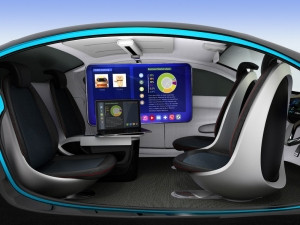
By the year 2022, 50% of new vehicles will be shipped with vehicle-to-vehicle (V2V) capabilities, a technology that enables real-time short-range communication between vehicles.
This is according to a new report from Juniper Research, titled "Consumer Connected Cars: Applications, Telematics & V2V 2017-2022.
The report found the total number of V2V-enabled consumer vehicles on the road will reach 35 million by 2022, up from less than 150 000 vehicles in 2017.
V2V communications comprises a wireless network where vehicles send messages to each other with information about what they are doing. This data includes speed, location and direction of travel, loss of stability, safety warnings and traffic information.
Juniper reveals this strong growth rate (376% CAGR) reflects the early stages of roll-out for V2V, but will still only represent 2.7% of all vehicles, while consumer vehicles installed with V2V hardware in Africa and Middle East will amount to only 0.02%.
According to Juniper, the technology, introduced by Mercedes-Benz and Cadillac, will play an important role in the advance of autonomous vehicles, as the annual production of self-driving cars approaches 15 million by 2025. The research found that, alongside GPS, light-detection and ranging and road mapping, V2V will be among the critical technologies in delivering autonomous driving systems.
Meanwhile, research firm Gartner forecasts that about one in five vehicles on the road worldwide will have some form of wireless network connection by 2020, amounting to more than 250 million connected vehicles. The proliferation of vehicle connectivity will have implications across the major functional areas of telematics, automated driving, infotainment and mobility services, it adds.
"The connected car is already a reality, and in-vehicle wireless connectivity is rapidly expanding from luxury models and premium brands, to high-volume midmarket models," says James F Hines, research director at Gartner.
"The increased consumption and creation of digital content within the vehicle will drive the need for more sophisticated infotainment systems, creating opportunities for application processors, graphics accelerators, displays and human-machine interface technologies. At the same time, new concepts of mobility and vehicle usage will lead to new business models and expansion of alternatives to car ownership, especially in urban environments."
According to Heather Ashton, research manager at IDC, the US Department of Transportation's National Highway Traffic Safety Administration supported the private industry-led auto-braking agreement, and is also behind V2V and vehicle-to-infrastructure communications.
"Making V2V communications mandatory may cut the time to reach 95% of US vehicle penetration in half. This is imperative as we move to benefit from connected cars. And, while this initial proposed ruling focuses on two safety applications, there are numerous other applications for the technology, including the support of vehicle-to-infrastructure applications that start to realise the vision for having connected cars interact with smart city streets," she explains.
Share